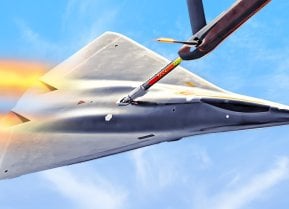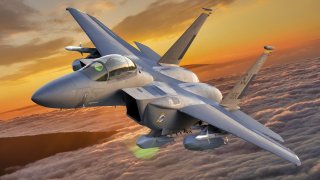No F-35: Why Boeing’s F-15SE Silent Eagle Failed to Take Off
The F-15 Silent Eagle (F-15SE), first flown in 2010, was Boeing's attempt to upgrade the fourth-generation F-15 with stealth capabilities to compete with Lockheed Martin's F-35 Lightning II.
Summary and Key Points: The F-15 Silent Eagle (F-15SE) was developed by Boeing as a stealthier upgrade to the fourth-generation F-15, intended to compete with the more advanced and expensive fifth-generation F-35 Lightning II.
-First flown in 2010, the F-15SE featured conformal weapons bays, radar-absorbing materials, and reconfigured stabilizers to enhance stealth and extend range.
-Despite its innovative design and potential for cost savings, the Silent Eagle failed to attract buyers, with South Korea and Saudi Arabia opting for other aircraft. Consequently, the F-15SE was never produced, leaving its potential untapped.
F-15SE Silent Eagle: A Missed Opportunity for Cost-Effective Stealth
Stealth is the name of the modern air warfare game. The harder a bird is for enemy radar systems to detect, the better.
The F-15SE, aka the Silent Eagle, was the Air Force’s quiet acknowledgement that its ubiquitous fourth-generation F-15 would need greater stealth capabilities to keep pace in the increasingly contested modern era.
First flown in 2010, Boeing developed this upgraded fourth-generation warplane to better compete with Lockheed Martin’s pricier fifth-generation warplane, the F-35 Lightning II.
The F-35 is not only a U.S. military warplane. It is one of Lockheed’s most important export systems as well. Boeing hoped to cut into that business by producing a stealthier variant of the F-15 that was highly effective, stealthy like the F-35, but far more affordable than the Lightning II.
Interesting Features of the Silent Eagle
One of the most interesting upgrades for the Silent Eagle over its predecessors was its conformal weapons bays. These not only made the plane stealthier, but also meant that the bird could carry more missiles.
All these increased capabilities helped to ensure the Silent Eagle’s excellence in the Suppression of Enemy Air Defenses operations that have come to define much of the F-15’s post-Cold War existence.
Engineers on the Silent Eagle project made some adjustments to the F-15’s body as well. One thing they did was move the twin vertical stabilizers around so they were canted outward by 15 degrees. This modest change added nearly 100 miles to the F-15SE’s range. The Silent Eagle was coated in Radar Absorbent Materials (RAM), and this is where the aircraft was most innovative – and most interesting.
The reason for the RAM coating was to help reduce the radar cross section of areas of the plane that were simply not stealthy. Remember, despite all the upgrades and changes to assorted F-15 variants, at its core the basic airframe remains the same. There are certain unchangeable features of the bird.
The F-15 was not originally designed to be stealthy. It was designed for speed. But the RAM, while not making the Silent Eagle completely stealthy, certainly helped cut down on its visibility to enemy radar systems.
The F-15 Silent Eagle Isn’t Wanted
Sadly for Boeing, this sweet new F-15 variant was never purchased. Initially, the bird was developed as part of a larger deal with South Korea’s air force, but Seoul later opted for the F-35. Meanwhile, Saudi Arabia expressed an initial interest in the Silent Eagle, but Riyadh chose to purchase F-15C and D variants.
So neither the U.S. Air Force nor any of America’s major partners wanted to purchase this stealthier variant of the F-15. It died in the womb. It would have been interesting to have seen a small grouping of these warbirds purchased, if not by a foreign military, then by the United States, to see if they were worth greater investment.
Certainly, they are not as advanced as the F-35 or F-22. But the F-15 Silent Eagle might have helped keep costs down while maintaining key capabilities for the Air Force. Alas, we will never know.
About the Author
Brandon J. Weichert, a National Interest national security analyst, is a former Congressional staffer and geopolitical analyst who is a contributor at The Washington Times, the Asia Times, and The-Pipeline. He is the author of Winning Space: How America Remains a Superpower, Biohacked: China’s Race to Control Life, and The Shadow War: Iran’s Quest for Supremacy. His next book, A Disaster of Our Own Making: How the West Lost Ukraine, is due October 22 from Encounter Books. Weichert can be followed via Twitter @WeTheBrandon.
Image Credit: Creative Commons and/or Shutterstock.


